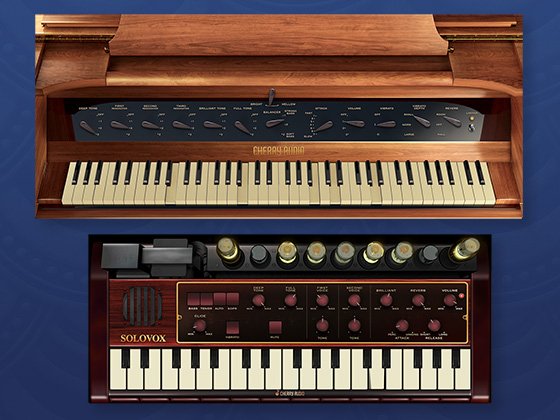$2.50 $5.00
QUADELAY CE (Compact Edition)
QUADELAY CE is a “compact edition” version of our QUADELAY module. It is identical in every way, except it doesn’t have dual FX loops for the A/B and C/D delay pairs. QUADELAY CE is FREE if you already own QUADELAY and vice versa.
QUADELAY is four delays in one module, specifically, two stereo pairs of delays with mathematically related time divisions. It is particularly useful for thickening-up mono sounds, enhancing the stereo image, or at minimum delay times, it can even function as an 80s vibe digital reverb. With a maximum delay time of 32 seconds and optional “freeze” mode, QUADELAY can also function as an ambient looper / soundscape machine! QUADELAY is also equipped with a variable size spring reverb emulation.
QUADELAY is a stereo in / out effects module and is best appreciated when both output channels are used. If only one input channel is used, it will be duplicated at the unused input. When using the effects loops, please use both left and right send and return jacks.
The large blue button switches QUADELAY on and off. Note that this is a “soft switch” so that the effect will not be cut off abruptly when QUADELAY is tuned off.
QUADELAY processing centres around a configureable delay time which we call TIME A. Three additional delay times (B, C and D) are calculated based on fractions of A, such as 2/3, 3/4 etc., depending on the divisions (DIVS) option selected.
In the DELAY section, TIME A varies the main delay time A between 250ms and 32 seconds.
DIVS selects from 57 different division combinations for delay times B, C and D. Instead of being able to select each division individually, we took a series of multipliers, 8 in total based on fractions, such as 2/3, 3/4, 3/5 and so on. We then generated all possible combinations of those, giving 56 presets numbered 1 to 56. Preset 1 for example is based on the divisions 2/3, 3/4 and 3/5 for times B, C and D. Preset 0 (the default) is a special set of numbers based on the golden and silver ratios and tends to produce the least obvious rhythmic pattern, so is well suited for ambient soundscapes and reverb-like effects.
The ABCD LEDs will flash to give a visual indication of how the delay times relate to one another.
The SPREAD section affects the panning of each of the delays. So for example, setting A/B to 50% means that delay A will be 50% right and delay B will be 50% left. Setting A/B or C/D to 100% will pan hard left / right, and 0% means no panning will be applied. Setting A/B and C/D to different amounts can enhance the stereo effect.
Turning on FLOW will modulate the pan position at a frequency corresponding to the A and C delay time (x8). So essentially, A and B will change sides at one rate, and B and C will change sides at another rate. Enabling FLOW can add a sense of movement and depth to otherwise static or “one-dimensional” sounds.
The MIX section allows you to balance the levels of delays A/B and C/D as well as the amount of the DRY signal. The pair of LEDs will light blue to indicate the input (left) and output (right) levels. If either LED lights red, then levels are getting a bit hot = -1.0dB.
MOD varies the modulation depth for each of the independent LFOs for the four delay lines.
TONE varies the low pass cutoff frequency from 1.5KHz to 10KHz applied to the delay repeats.
REGEN varies the regeneration / feedback for the repeats of all four delays from a single repeat (for each delay) to infinite repeats. Note at high settings, depending on the type of input signal, output levels can get a bit unruly, and while internal limiting is applied at the feedback stage, keep an eye on the output LED for any red flashes.
FREEZE mode is your new ambient soundscaping friend and changes the behaviour of REGEN when turning QUADELAY on and off. When FREEZE mode is on, and you turn QUADELAY off, REGEN is set to 100% internally so whatever is in the delay buffers repeats endlessly. When QUADELAY is on, and FREEZE mode is on, REGEN behaves as normal. When FREEZE mode is on, the REVERB effect also remains active when QUADELAY is off.
The REVERB section contains controls for an emulated spring reverb. TONE varies the reverb sound between dark and bright, the SIZE switch selects between Small, Medium and Large emulated spring sizes, and the MIX control adjusts the amount of effect.
QUADELAY can also be toggled on and off via CV trigger with a +1V pulse or more.
We hope that you find QUADELAY an interesting and useful effect and please check out the audio demos to hear it in action.
Title of Song
- QUADELAY-CE-GUITAR











































































